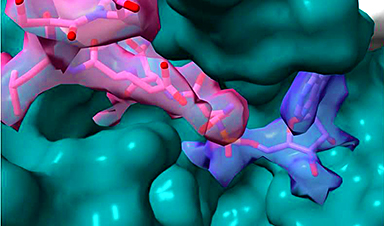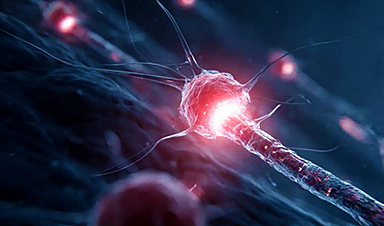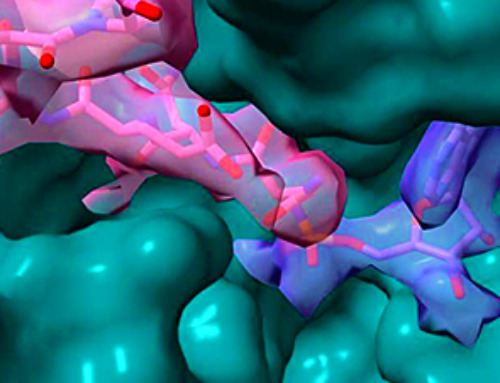In a recent study published in Science Advances, a group of researchers assessed whether dendritic spine head diameter in the temporal cortex is a better predictor of episodic memory performance in older adults than synapse quantity, accounting for β amyloid (Aβ) plaques (Clusters of protein fragments in the brain), neurofibrillary tangles (NFTs) (Twisted protein fibers inside brain cells), and sex.
Background
Episodic memory, essential for recalling personal experiences, declines with age and neurodegenerative diseases, especially due to temporal cortex injury. Dendritic spines, key postsynaptic compartments in the brain, influence synapse strength and are crucial for memory. Spine loss naturally occurs with aging, particularly in regions vital for memory, and is more strongly associated with memory impairment in Alzheimer’s disease (AD) (A progressive brain disorder causing memory loss) than Aβ plaques or NFTs.
Further research is needed to clarify how specific features of dendritic spines contribute to memory function in aging beyond the effects of natural spine loss and common neurodegenerative pathologies.
About the study
Postmortem samples of brain areas Brodmann area (BA) 6 and BA37 were obtained from participants in the Religious Orders Study and Rush Memory and Aging Project (ROSMAP), which includes individuals who enroll without known dementia and agree to annual clinical evaluations and brain donation upon death.
The study was approved by an institutional review board at Rush University Medical Center. All participants provided informed consent, including consent for brain donation and sharing of their resources. The samples analyzed in this study covered a range of brain pathologies and cognitive scores, with appropriately sized frozen tissue samples available for experiments.
Cognitive testing of ROSMAP participants included assessments of episodic memory, perceptual speed, visuospatial ability, semantic memory, and working memory, with composite scores calculated for each domain. Additionally, the Mini-Mental State Examination (MMSE) was administered, and clinical diagnoses of major depressive disorder were made based on established criteria.
Dendritic spines and synaptic markers were visualized using Golgi-Cox staining of brain samples from BA6 and BA37. Imaging of dendrites was performed by a blinded experimenter using bright-field microscopy at high magnification. Dendritic segments meeting specific criteria were selected for analysis, and 3D digital reconstructions of dendrites and spines were conducted using specialized software. Spine morphology was classified into various categories, and quantitative measurements were collected for analysis. In total, 45,763 μm of dendrite length from 2,157 neurons were analyzed, yielding data on 55,521 individual spines.
Statistical analyses involved a multistage approach to validate the generalizability of results. Dendritic spine traits were analyzed using LASSO (Least Absolute Shrinkage and Selection Operator) regression to identify which features most significantly contributed to episodic memory performance in older adults. Cross-validation techniques ensured model accuracy, and the results were replicated in an independent sample. Spearman correlations were used to explore relationships between dendritic spine features, pathology, and memory scores, with multiple comparisons controlled for using an appropriate false discovery rate.
Study results
Dendritic spines were sampled and analyzed from the frontal and temporal cortices of 128 individuals from the ROSMAP. These postmortem samples were taken from BA6 within the premotor cortex and BA37 within the temporal cortex. The participants, who had a mean age of 90.53 ± 6.06 years, displayed varying cognitive performance scores and levels of AD-related neuropathology. Using bright-field microscopy, dendritic spine density and morphology in BA37 and BA6 tissue slices were imaged at 60X magnification and reconstructed in three dimensions. The data were then analyzed to determine the relationship between dendritic spine features and episodic memory performance.
The datasets from BA37 and BA6 were subjected to a supervised learning algorithm to identify specific dendritic spine features that might predict episodic memory performance beyond the effects of other variables, such as AD-related neuropathology. The samples were divided into a discovery set (n = 63) and a validation set (n = 62), with three cases excluded due to missing data. LASSO regression was performed on the discovery set to identify the dendritic spine features most strongly associated with episodic memory function. The analysis revealed that spine head diameter in BA37 was the most significant predictor of episodic memory performance.
The results were validated using nested model cross-validation in the replication set, confirming that models including spine head diameter, along with NFTs, neuritic Aβ plaques, and sex, provided the best prediction of episodic memory. Removing spine length, density, and volume from the model further improved its accuracy, highlighting the importance of spine head diameter in the temporal cortex for memory function.
Conversely, LASSO regression on the BA6 dataset identified spine length as the strongest predictor of episodic memory performance, although its association was weaker compared to BA37 spine head diameter. Models incorporating BA6 spine features did not perform as well, indicating that the contribution of spine head diameter to memory performance is specific to the BA37 temporal cortex.
Further analysis showed a significant positive correlation between BA37 spine head diameter and episodic memory score, even after controlling for multiple comparisons. In contrast, BA37 spine density did not significantly correlate with cognitive scores or AD-related pathology, and no significant correlations were found between BA6 spine features and cognition or pathology measures.
Conclusions
To summarize, using tissue samples from 128 ROSMAP participants, the analysis revealed that larger dendritic spine head diameters in the temporal cortex were associated with better episodic memory performance, while spine density showed no significant effect. These findings suggest that synaptic strength, rather than the number of synapses, is crucial for maintaining memory in older adults, with implications for targeted therapeutic strategies in preclinical AD.
- Courtney K. Walker et al. Dendritic spine head diameter predicts episodic memory performance in older adults.Sci. Adv.(2024).
DOI:10.1126/sciadv.adn5181 https://www.science.org/doi/10.1126/sciadv.adn5181
News
Team finds flawed data in recent study relevant to coronavirus antiviral development
The COVID pandemic illustrated how urgently we need antiviral medications capable of treating coronavirus infections. To aid this effort, researchers quickly homed in on part of SARS-CoV-2's molecular structure known as the NiRAN domain—an [...]
Drug-Coated Neural Implants Reduce Immune Rejection
Summary: A new study shows that coating neural prosthetic implants with the anti-inflammatory drug dexamethasone helps reduce the body’s immune response and scar tissue formation. This strategy enhances the long-term performance and stability of electrodes [...]
Scientists discover cancer-fighting bacteria that ‘soak up’ forever chemicals in the body
A family of healthy bacteria may help 'soak up' toxic forever chemicals in the body, warding off their cancerous effects. Forever chemicals, also known as PFAS (per- and polyfluoroalkyl substances), are toxic chemicals that [...]
Johns Hopkins Researchers Uncover a New Way To Kill Cancer Cells
A new study reveals that blocking ribosomal RNA production rewires cancer cell behavior and could help treat genetically unstable tumors. Researchers at the Johns Hopkins Kimmel Cancer Center and the Department of Radiation Oncology and Molecular [...]
AI matches doctors in mapping lung tumors for radiation therapy
In radiation therapy, precision can save lives. Oncologists must carefully map the size and location of a tumor before delivering high-dose radiation to destroy cancer cells while sparing healthy tissue. But this process, called [...]
Scientists Finally “See” Key Protein That Controls Inflammation
Researchers used advanced microscopy to uncover important protein structures. For the first time, two important protein structures in the human body are being visualized, thanks in part to cutting-edge technology at the University of [...]
AI tool detects 9 types of dementia from a single brain scan
Mayo Clinic researchers have developed a new artificial intelligence (AI) tool that helps clinicians identify brain activity patterns linked to nine types of dementia, including Alzheimer's disease, using a single, widely available scan—a transformative [...]
Is plastic packaging putting more than just food on your plate?
New research reveals that common food packaging and utensils can shed microscopic plastics into our food, prompting urgent calls for stricter testing and updated regulations to protect public health. Beyond microplastics: The analysis intentionally [...]
Aging Spreads Through the Bloodstream
Summary: New research reveals that aging isn’t just a local cellular process—it can spread throughout the body via the bloodstream. A redox-sensitive protein called ReHMGB1, secreted by senescent cells, was found to trigger aging features [...]
AI and nanomedicine find rare biomarkers for prostrate cancer and atherosclerosis
Imagine a stadium packed with 75,000 fans, all wearing green and white jerseys—except one person in a solid green shirt. Finding that person would be tough. That's how hard it is for scientists to [...]
Are Pesticides Breeding the Next Pandemic? Experts Warn of Fungal Superbugs
Fungicides used in agriculture have been linked to an increase in resistance to antifungal drugs in both humans and animals. Fungal infections are on the rise, and two UC Davis infectious disease experts, Dr. George Thompson [...]
Scientists Crack the 500-Million-Year-Old Code That Controls Your Immune System
A collaborative team from Penn Medicine and Penn Engineering has uncovered the mathematical principles behind a 500-million-year-old protein network that determines whether foreign materials are recognized as friend or foe. How does your body [...]
Team discovers how tiny parts of cells stay organized, new insights for blocking cancer growth
A team of international researchers led by scientists at City of Hope provides the most thorough account yet of an elusive target for cancer treatment. Published in Science Advances, the study suggests a complex signaling [...]
Nanomaterials in Ophthalmology: A Review
Eye diseases are becoming more common. In 2020, over 250 million people had mild vision problems, and 295 million experienced moderate to severe ocular conditions. In response, researchers are turning to nanotechnology and nanomaterials—tools that are transforming [...]
Natural Plant Extract Removes up to 90% of Microplastics From Water
Researchers found that natural polymers derived from okra and fenugreek are highly effective at removing microplastics from water. The same sticky substances that make okra slimy and give fenugreek its gel-like texture could help [...]
Instant coffee may damage your eyes, genetic study finds
A new genetic study shows that just one extra cup of instant coffee a day could significantly increase your risk of developing dry AMD, shedding fresh light on how our daily beverage choices may [...]





















